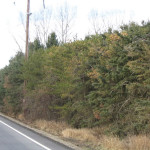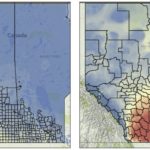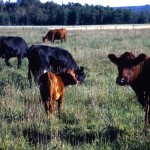
It’s that time of year when severe summer weather and tornadoes can form
Tornadoes have occurred in nearly all regions of Canada — here is what to look for when a severe storm is approaching

More environmental good work is in the works
The Heart River Watershed Restoration is the latest in a long line of environmental projects funded by the foundation

Want to plant a shelterbelt? Here are some tips
A windbreak designed for your farm site is well worth the investment, but mistakes can cause years of headaches

Capturing value from riparian areas
The first step is to have a plan before you start fencing, says riparian management expert

Navigating Alberta’s solar energy boom
Experts weigh in with some best practices for installing solar energy arrays — and getting the job done right
Funding available for green projects

Southern Alberta could soon have Texas weather
Want to see the climate projections for your county? New online atlas predicts a sweltering future

We think we have water in abundance, but that’s just not so
We need to start appreciating how precious each litre of fresh water is, and how much of it we are using

Keep score when it comes to your soil health
The Visual Soil Assessment scorecard can help producers identify whether their soils are degrading

Grasslands a carbon-capture colossus
Do the math: Take Alberta $15-per-tonne carbon tax and then look at how much carbon is stored in grasslands

